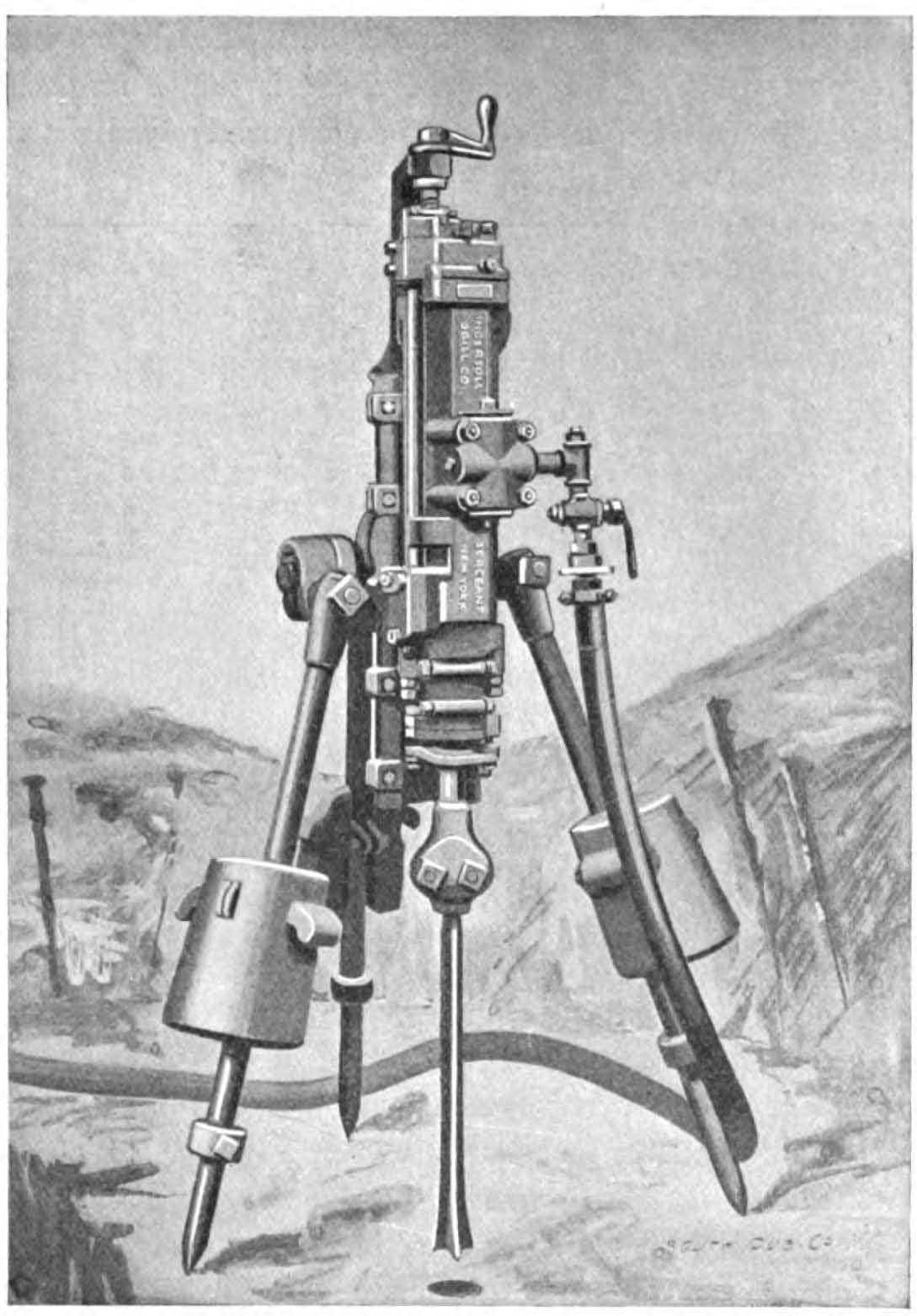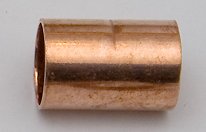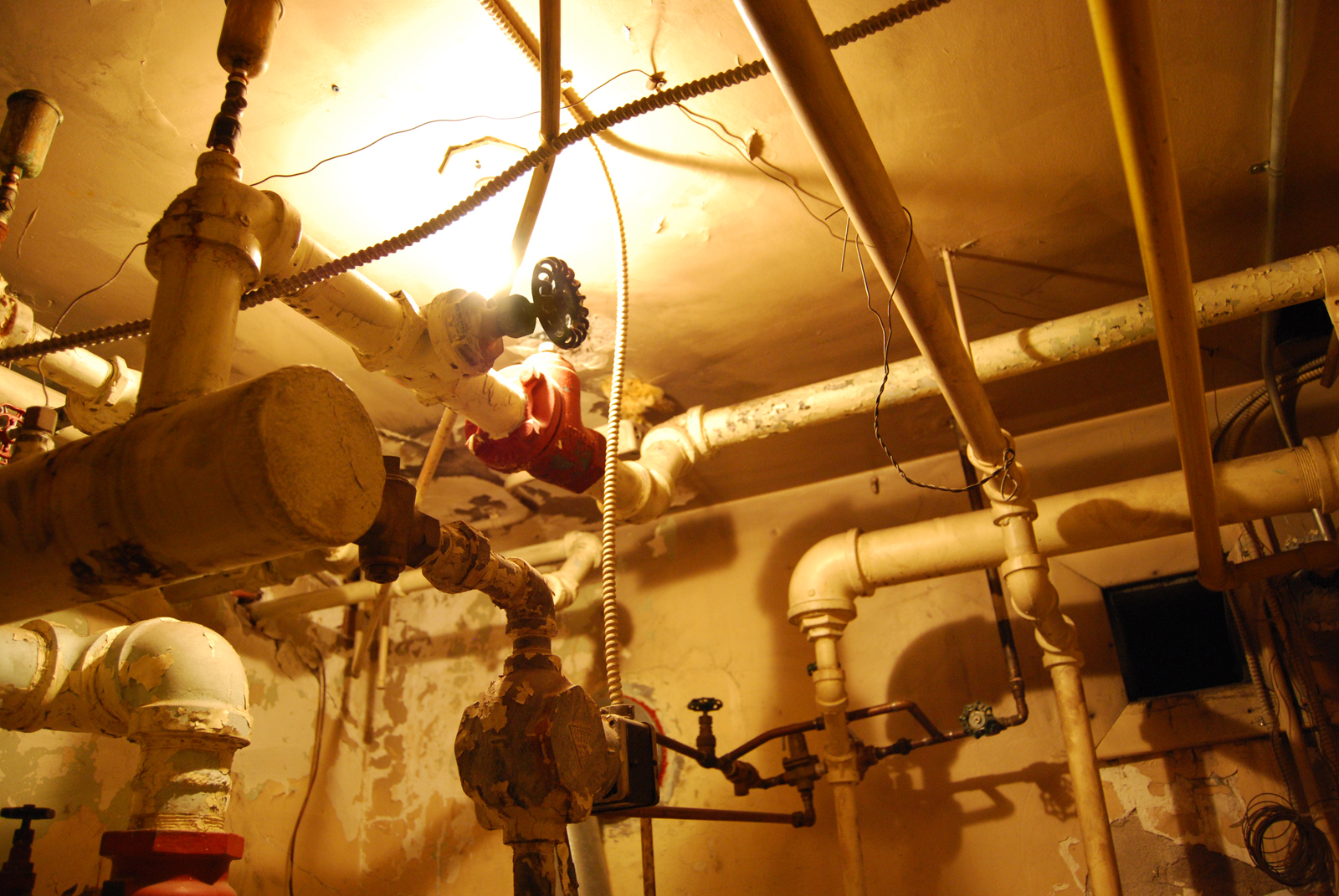|
Quick Connector
For hoses and piping, a quick connect fitting is a coupling used to provide a fast, make-or-break connection of gas or liquid transfer lines. Operated by hand, quick connect fittings replace threaded or flanged connections, which require wrenches. When equipped with self-sealing valves, quick connect fittings will, upon disconnection, automatically contain any fluid in the line. Uses There are a large variety of quick connect fittings, also called push fittings. They are used many kilometers underwater, in drilling operations, in outer space to dock spacecraft, pneumatic-power, plumbing, heating, electrical, and fire-suppression applications. Quick connect fittings are intended to be applied more easily than traditional fittings, requiring only that that pipes be pushed together firmly to lock the teeth of the fitting firmly. The teeth are forced deeper into the tubing when opposing force is applied to them, preventing their separation from the tubing. An o-ring provides a water an ... [...More Info...] [...Related Items...] OR: [Wikipedia] [Google] [Baidu] |
Hose
A hose is a flexible hollow tube designed to carry fluids from one location to another. Hoses are also sometimes called ''pipes'' (the word ''pipe'' usually refers to a rigid tube, whereas a hose is usually a flexible one), or more generally '' tubing''. The shape of a hose is usually cylindrical (having a circular cross section). Hose design is based on a combination of application and performance. Common factors are size, pressure rating, weight, length, straight hose or coilhose, and chemical compatibility. Applications mostly use nylon, polyurethane, polyethylene, PVC, or synthetic or natural rubbers, based on the environment and pressure rating needed. In recent years, hoses can also be manufactured from special grades of polyethylene ( LDPE and especially LLDPE). Other hose materials includPTFE(Teflon), stainless steel, and other metals. Dredge rubber hoses have a long story, which features high strength and flexibility. A flexible dredging hose widely used in dred ... [...More Info...] [...Related Items...] OR: [Wikipedia] [Google] [Baidu] |
Piping
Within industry, piping is a system of pipes used to convey fluids (liquids and gases) from one location to another. The engineering discipline of piping design studies the efficient transport of fluid. Industrial process piping (and accompanying in-line components) can be manufactured from wood, fiberglass, glass, steel, aluminum, plastic, copper, and concrete. The in-line components, known as fittings, valves, and other devices, typically sense and control the pressure, flow rate and temperature of the transmitted fluid, and usually are included in the field of piping design (or piping engineering), though the sensors and automatic controlling devices may alternatively be treated as part of instrumentation and control design. Piping systems are documented in piping and instrumentation diagrams (P&IDs). If necessary, pipes can be cleaned by the tube cleaning process. ''Piping'' sometimes refers to piping design, the detailed specification of the physical piping layout ... [...More Info...] [...Related Items...] OR: [Wikipedia] [Google] [Baidu] |
F 37 (Flange Connection)
The Parflange F37 system is a technology from the hydraulic area of Parker-Hannifin, which allows a non welded flange connection of hydraulic tubes and pipes. Processing Use-orientated, the connection will be done by either flaring or retaining ring technology. Flaring Technology After putting a F37 flange onto a seamless hydraulic tube or pipe, the tube end will be flared to 37°, what also explains the name of this technology. The flaring is done by a special orbitally flaring process, which compresses the surface of the pipe end, gaining an excellent sealing surface. An insert made of carbon or stainless steel will be placed into the flared pipe end. The insert is soft sealed by an O-Ring to the pipe side. To be sealed against a flat counterpart (e.g. manifold or block) the insert has a groove on the front side for a so-called "F37-Seal" made of Polyurethane or optionally an o-ring or bonded seal made of carbon steel or stainless steel with a Nitrile rubber or FKM sealing ... [...More Info...] [...Related Items...] OR: [Wikipedia] [Google] [Baidu] |
Ingersoll-Rand
Ingersoll Rand is an American multinational company that provides flow creation and industrial products. The company was formed in February 2020 through the spinoff of the industrial segment of Ingersoll-Randplc (now known as Trane Technologies) and its merger with Gardner Denver. Its products are sold under more than 40 brands across all major global markets. Based in Davidson, North Carolina, Ingersoll Rand operates in two segments: Industrial Technologies and Services and Precision and Science Technologies. History History of Ingersoll Rand Simon Ingersoll founded Ingersoll Rock Drill Company in 1871 in New York, and in 1888, it combined with Sergeant Drill to form Ingersoll Sergeant Drill Company. The Ingersoll Sergeant Drill Company introduced the world's first direct-connected, electronic motor-driven compressor. Also in 1871, brothers Addison Rand and Jasper Rand, Jr. established Rand Drill Company with its main manufacturing plant in Tarrytown, New York. Rand dril ... [...More Info...] [...Related Items...] OR: [Wikipedia] [Google] [Baidu] |
Compressed Air
Compressed air is air kept under a pressure that is greater than atmospheric pressure. Compressed air is an important medium for transfer of energy in industrial processes, and is used for power tools such as air hammers, drills, wrenches, and others, as well as to atomize paint, to operate air cylinders for automation, and can also be used to propel vehicles. Brakes applied by compressed air made large railway trains safer and more efficient to operate. Compressed air brakes are also found on large highway vehicles. Compressed air is used as a breathing gas by underwater divers. It may be carried by the diver in a high pressure diving cylinder, or supplied from the surface at lower pressure through an air line or diver's umbilical. Similar arrangements are used in breathing apparatus used by firefighters, mine rescue workers and industrial workers in hazardous atmospheres. In Europe, 10 percent of all industrial electricity consumption is to produce compressed air� ... [...More Info...] [...Related Items...] OR: [Wikipedia] [Google] [Baidu] |
Coupling (piping)
In piping and plumbing, a coupling (or coupler) is a very short length of pipe or tube, with a socket at one or both ends that allows two pipes or tubes to be joined, welded (steel), brazed or soldered (copper, brass etc.) together. Alternatively it is a short length of pipe with two female National pipe threads (NPT) (in North American terms, a coupler is a double female while a nipple is double male) or two male or female British standard pipe threads. If the two ends of a coupling are of different standards or joining methods, the coupling is called an adapter. Examples of adapters include one end BSP threaded with the other NPT threaded, and one end threaded with the other a plain socket for brazing. A coupling whose ends use the same connection method but are of different sizes is called a reducing coupling or reducer. An example is a 3/4" NPT to 1/2" NPT coupling. See also * Closet flange * Eccentric reducer * Nipple (plumbing) * Piping and plumbing fittings * Re ... [...More Info...] [...Related Items...] OR: [Wikipedia] [Google] [Baidu] |
Liquified Natural Gas
Liquefied natural gas (LNG) is natural gas (predominantly methane, CH4, with some mixture of ethane, C2H6) that has been cooled down to liquid form for ease and safety of non-pressurized storage or transport. It takes up about 1/600th the volume of natural gas in the gaseous state (at standard conditions for temperature and pressure). LNG is odorless, colorless, non-toxic and non-corrosive. Hazards include flammability after vaporization into a gaseous state, freezing and asphyxia. The liquefaction process involves removal of certain components, such as dust, acid gases, helium, water, and heavy hydrocarbons, which could cause difficulty downstream. The natural gas is then condensed into a liquid at close to atmospheric pressure by cooling it to approximately ; maximum transport pressure is set at around ( gauge pressure), which is about one-fourth times atmospheric pressure at sea level. The gas extracted from underground hydrocarbon deposits contains a varying mix of ... [...More Info...] [...Related Items...] OR: [Wikipedia] [Google] [Baidu] |
Air-line Fitting
Also known as pneumatic couplings, quick disconnects, air couplers, quick connect couplers, and quick couplers, hand-operable air-line fittings allow manual disconnection of gas supply lines, including compressed air and breathable air (a subset of breathing gases). Most fittings do not have regional standardization but have become de facto standards through popular adoption. Mechanical structure A coupled pair consists of a male nipple or plug and a female coupler or socket. One side is connected to a flexible supply hose; the other may be attached to a manifold, valve, tool, or another hose. A female coupler is used on the supply side, and a male nipple is used on the receiving side. Fitting profiles have identifiable geometry on the male end, but care must be taken to use a compatible coupler. Couplers use springs and balls to lock mating nipples into place. A seal is effected using O-rings along the shaft of the nipple or by compression by the tip. Although incompatibl ... [...More Info...] [...Related Items...] OR: [Wikipedia] [Google] [Baidu] |
Hose Coupling
A hose coupling is a connector on the end of a hose to connect (or ''couple'') it with another hose or with a tap or a hose appliance, such as an irrigation sprinkler. It is usually made of steel, brass, stainless steel, aluminium or plastic. Due to the great variety of the designs and the number of countries in which they were created, it is difficult to trace the origin of many. Patents that cover designs similar to those below include: * 1876: HOSE-COUPLING, No.175,232. * Coupling for hose and pipe. US 894900 A * 1915: Coupling. US 1248558 A * 1931: Coupling. US 1947593 A (claw-types) Threaded coupler types Garden hose thread See Garden hose thread. See also Hoselink and Hozelock plastic click-on connectors. GFR NF E 29-579 GFR Ground joint A "boss" ground joint coupling valve hose coupling, primarily used for compressed air or steam. It consists of a stem, wing nut and spud. It seals as a soft copper seat located in the spud is drawn against the stem by tighteni ... [...More Info...] [...Related Items...] OR: [Wikipedia] [Google] [Baidu] |
Push-to-pull Compression Fittings
Push-to-pull, push-to-connect, push-in, push-fit, or instant fittings are a type of easily removed compression fitting or quick connect fitting that allows an air (or water) line to be attached, nominally without the use of tools (a tool is still usually required for cutting tubing to length and removal). These fittings act similar to the way regular compression fittings work, but use a resilient O-ring (normally EPDM) for sealing, and a grip ring (normally stainless steel) to hold the tube in place. The main advantages of this technology over traditional soldered copper or glued plastic are that fittings can easily be unmounted and re-used, speed of assembly, assembly is possible when wet, and that the joints are still be rotated after connection. These fittings can be used on all sorts of pipe of many sizes for many purposes. History British manufacturer Hepworth Building Products (founded 1936 in Doncaster) introduced these fittings under the brand Hep2O in 1980. It was a g ... [...More Info...] [...Related Items...] OR: [Wikipedia] [Google] [Baidu] |
Plumbing
Plumbing is any system that conveys fluids for a wide range of applications. Plumbing uses pipes, valves, plumbing fixtures, tanks, and other apparatuses to convey fluids. Heating and cooling (HVAC), waste removal, and potable water delivery are among the most common uses for plumbing, but it is not limited to these applications. The word derives from the Latin for lead, ''plumbum'', as the first effective pipes used in the Roman era were lead pipes. In the developed world, plumbing infrastructure is critical to public health and sanitation. Boilermakers and pipefitters are not plumbers although they work with piping as part of their trade and their work can include some plumbing. History Plumbing originated during ancient civilizations, as they developed public baths and needed to provide potable water and wastewater removal for larger numbers of people. The Mesopotamians introduced the world to clay sewer pipes around 4000 BCE, with the earliest examples f ... [...More Info...] [...Related Items...] OR: [Wikipedia] [Google] [Baidu] |








